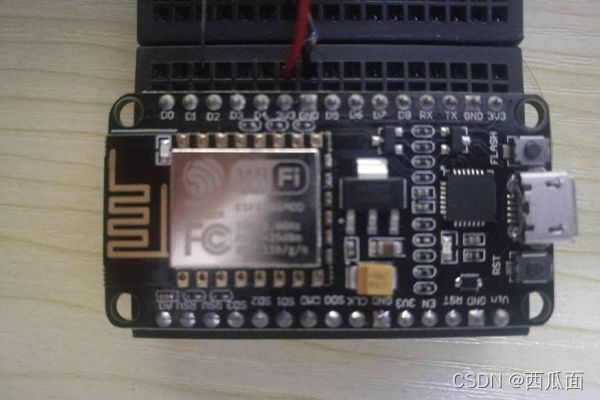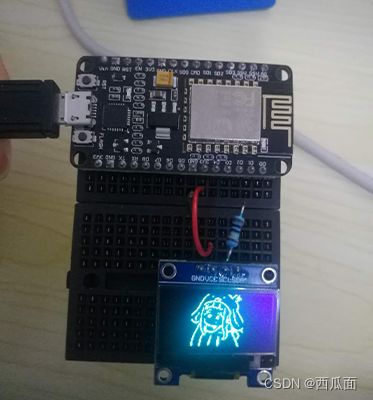使用arduino框架编写esp8266使用OLED屏幕 IIC U8G2
esp8266+OLED 2020-08-14
使用arduino框架编写esp8266使用OLED屏幕 IIC U8G2
配置ARDUINO支持ESP8266
-
对arduino编译器设置 文件 -> 首选项 -> 附加开发板管理器网址 填入 http://arduino.esp8266.com/stable/package_esp8266com_index.json
-
添加开发板 工具 -> 开发板 -> 开发板管理器 搜索 esp8266 安装 esp8266 by ESP8266 Community
选择开发板
- 我用的是 V3 CP2102 在选择开发板上选择的是 NodeMCU 1.0 (ESP-12E Module) 选普通的ESP8266烧录时会报错
- 设置好单片机的COM口
连接WIFI获取时间
- 使用NTP库来获取时间 项目 -> 添加库 -> 管理库 添加NTP库
- 使用NTP的实例 文件 -> 实例 -> NTPClient -> Basic
#include " ; //自己的WIFI的名称
const char *password = "" ; //自己的WIFI密码
WiFiUDP ntpUDP;
//NTPClient timeClient(ntpUDP); //这是原本的NTP时间
NTPClient timeClient(ntpUDP, "ntp1.aliyun.com",60*60*8, 30*60*1000); //这是添加时差后的时间 有8个小时的时间差
void setup(){
Serial.begin(115200); //设置串口比特率115200
WiFi.begin(ssid, password); //准备链接WIFI
while ( WiFi.status() != WL_CONNECTED ) { //判断是否链接成功 不成功是 6 成功是 WL_CONNECTED 3
delay ( 500 ); //等待500毫秒
Serial.print ( "." ); //在串口打印 .
}
timeClient.begin();
}
void loop() {
timeClient.update(); //刷新时间
Serial.println(timeClient.getFormattedTime()); //在串口打印时间
delay(1000); //等待1秒
}
- 设置好WIFI用户名密码改好时间差就可以烧录到ESP8266了
- 打开串口监视器115200 可以看到打印时间
添加OLED屏
- 这是ESP8266的接口在程序中调用需要写GPIO后面的数字 (比如D5 在程序中要写成 14)
- 声明 U8G2_SSD1306_128X64_NONAME_F_HW_I2C u8g2(U8G2_R0, /* reset=*/ U8X8_PIN_NONE);
- 初始化 U8G2 u8g2.begin(); u8g2.enableUTF8Print();
- 显示 u8g2.setCursor(30, 30); u8g2.print(“hello world”); u8g2.sendBuffer();
- 我们把获取到的时间每隔1秒显示在屏幕上
#include OLED改进
- 上面那个程序虽然能显示但是可以看到很明显的刷新
- 这就要用到 u8g2.firstPage() u8g2.nextPage() 循环刷新
- 我还想再开机时显示一个头像图片
- 我用的OLED是12864的所以用PS把头像修改为6262的图片
- 通过软件转码可以用 u8g2.drawXBM() 来将图片展示出来
- 最终的代码如下
#include // for WiFi shield
//#include // for WiFi 101 shield or MKR1000
#include OLED显示图片错位
- 图片不按正常显示可能是 大小设置的不正确
- 图片超出屏幕
- 和大小端有关比如我这个
- 可以参考 https://www.arduino.cn/thread-89244-1-1.html
- 我最后还是通过大佬的工具来弄好的
- 大佬工具地址 http://tools.clz.me/image-to-bitmap-array





